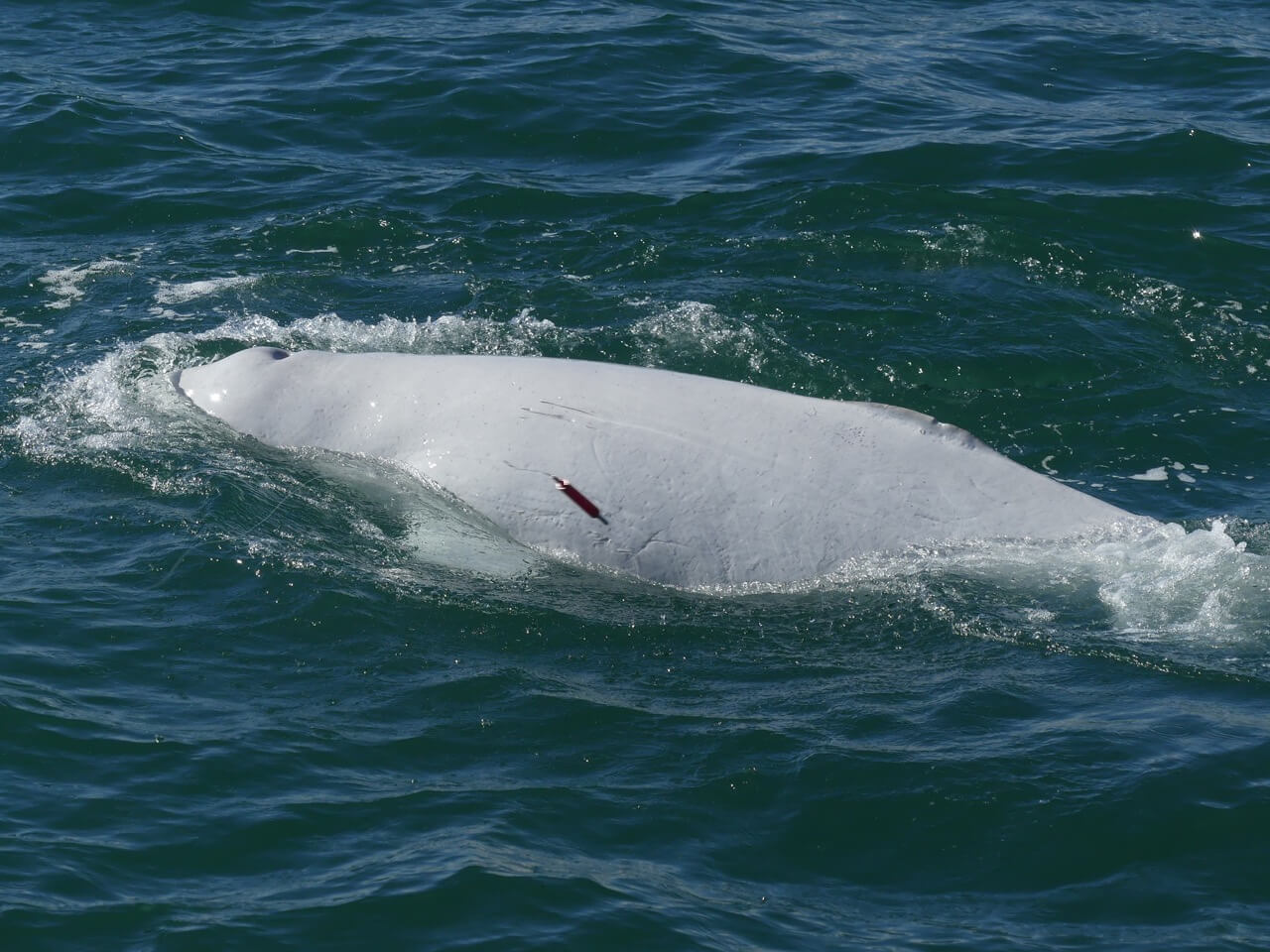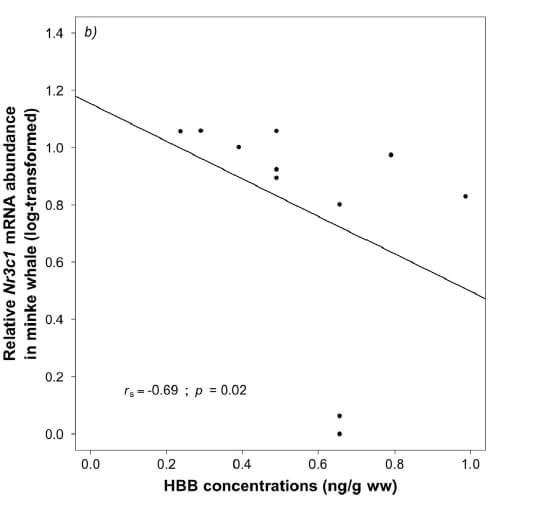More and more studies are suggesting that numerous so-called endocrine disruptors are accumulating in the tissues of whales and posing a threat to their health. Endocrine disruptors are substances that can interfere with the normal functioning of hormone regulation in an individual and thus potentially interfere with associated biological functions. But how exactly do contaminants interfere with the biological functions of whales? A recent study – conducted by Jonathan Verreault’s laboratory at the Université du Québec à Montréal and published in the Marine Pollution Bulletin – provides some very promising answers to this question that the scientific community has been asking for years.
According to this study, which focused on belugas and minke whales in the St. Lawrence, the transcription of certain genes involved in hormone regulation (mainly in these animals) was correlated with the concentrations of several contaminants accumulated in their tissues.
First of all, what is gene transcription?
Whales, just like us and many other living organisms, are made up of billions of cells. Each of these cells has a nucleus that contains our DNA. This DNA is composed of thousands of genes, each of which can be considered the recipe for the synthesis of a protein. In fact, in the cell’s nucleus, the gene will first be transcribed into a small segment of RNA (a molecule close to DNA, but that can easily slip out of the nucleus), which is later translated into a protein. Whether as enzymes, hormones or structuring material, proteins can play very different roles and contribute to a multitude of biological functions!
If the transcription of a gene is disrupted, then the synthesis of the protein that it codes can also be affected. If it is a protein that is critical for a biological function, then the entire biological function may be affected.
In the study, researchers looked at protein-coding genes involved in the regulation of certain hormones (thyroid, cortisol (stress hormone) and estrogen) related to reproduction, stress response or energy metabolism. They wanted to determine whether there were links between contaminant concentrations and the amount of RNA derived from the transcription of the genes studied.
What is a contaminant and which ones were selected in this study?
A contaminant is a chemical molecule that is foreign to an organism (not produced by it) and which, at a certain level, can cause an imbalance in the exposed organism. The study focuses on several persistent organic pollutants (POPs) and emerging halogenated flame retardants (HFRs). The latter are used in several industrial sectors (textiles, building materials, electronics, upholstery) to replace POPs that have been banned from production and use around the world.
Several of these contaminants were chosen because they were found in large quantities in the beluga and minke whale carcasses discovered on the shores of the St. Lawrence, but also because of their endocrine-disrupting properties. Thanks to monitoring efforts of beluga carcasses by Université de Montréal’s Faculty of Veterinary Medicine, it has been observed that over the past 10 years, more and more females found stranded along the St. Lawrence have died due to calving-related difficulties. These endocrine disruptors are therefore suspected to be one of the factors that may have contributed to the mortality of these animals.
The research team biopsied skin and fat samples from 45 male and 11 female minke whales. Contaminants were quantified in the fat samples and the amount of RNA derived from gene transcription was measured in the skin.
The results indicated a number of correlations (positive or negative) between the concentrations of certain contaminants and the amount of RNA for certain genes.
The results therefore suggest that many of the studied contaminants might have an impact on important biological functions such as energy metabolism, stress response, and reproduction by increasing or decreasing the transcription of the protein-coding genes involved in these functions. However, the authors remain cautious about the findings, as other factors such as age or diet may have influenced the observed correlations between contaminants and gene transcription. Further studies will be required to corroborate their hypothesis. Nevertheless, this study is a very promising starting point to better understand the action mechanisms of contaminants on the biological functions of whales, including minke whales and the endangered population of St. Lawrence belugas.
This study could serve as a reference for public decision-makers to take action to reduce anthropogenic impacts on belugas, minke whales and cetaceans in general.
Source:
(2019) Simond. A, Houde M.,Lesage V., Michaud R., Zbinden D., Verreault J., Associations between organohalogen exposure and thyroid- and steroid- related genes responses in Saint Lawrence Estuary belugas and minke whales. in Marine POllution bulletin 145 (2019) 174-184








